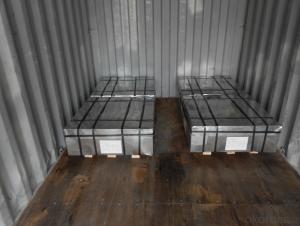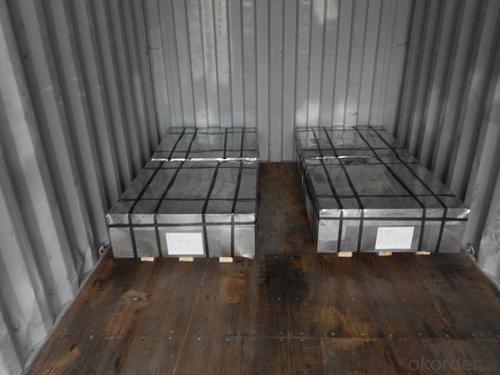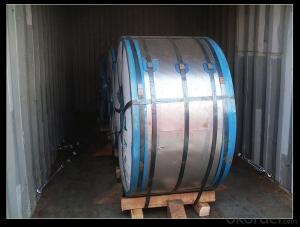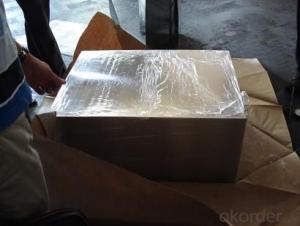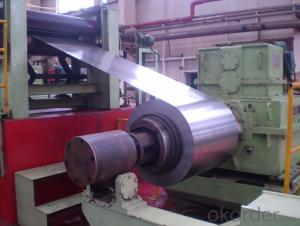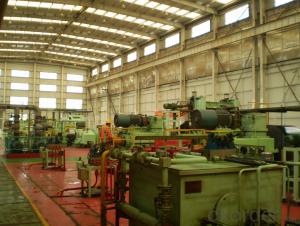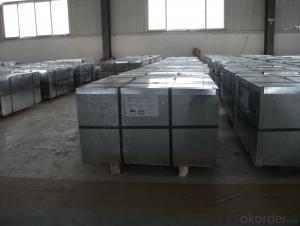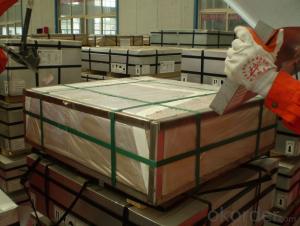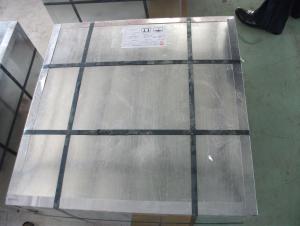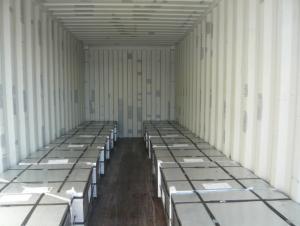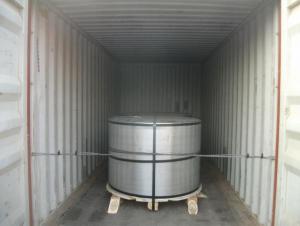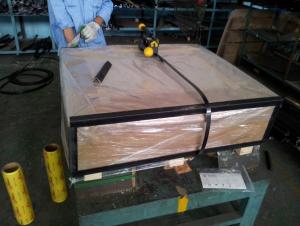TINPLATE of Prime or Secondary Quality
- Loading Port:
- China Main Port
- Payment Terms:
- TT OR LC
- Min Order Qty:
- -
- Supply Capability:
- -
OKorder Service Pledge
OKorder Financial Service
You Might Also Like
Our Tinplates Specification:
Standard: ISO 11949 -1995, GB/T2520-2000,JIS G3303,ASTM A623, BS EN 10202
Material: MR,SPCC
Thickness:0.15mm - 0.50mm
Width: 600mm -1150mm
Temper: T1-T5; DR8 - DR10;
Annealing: BA & CA
Passivation:311
Oil: DOS
Surface: Finish,bright,stone,matte,silver
Packing:
1、For sheets: plastic or waterproof paper, metallic cover and angles, steel strips,wooden pallet.
2、For Coils: plastic or waterproof paper,plastic protect plate,steel strips.
Coil Inner Diameter: 508mm
Weight: 6-10 tons/coil
Application: widely used in every kinds of packing cans,such as tea packaging cans, painting packaging cans, chemical packaging cans and dry food packaging cans; and also mechanical parts
Both Prime and Second Quality Are Available!!!
- Q: How does tinplate compare to tin-free steel in terms of properties and applications?
- Tinplate and tin-free steel have distinct properties and applications. Tinplate, which is steel coated with a thin layer of tin, offers excellent corrosion resistance, formability, and solderability. It is commonly used in the food and beverage industry for making cans, containers, and closures due to its ability to preserve the product's quality and prevent contamination. On the other hand, tin-free steel, also known as electrolytic chromium-coated steel, provides superior paint adhesion, scratch resistance, and weldability. It finds applications in manufacturing various products like aerosol cans, automotive parts, and appliances that require durability and aesthetic appeal. Ultimately, the choice between tinplate and tin-free steel depends on the specific requirements of the application at hand.
- Q: How is tinplate used in the cosmetics industry?
- Tinplate is commonly used in the cosmetics industry as packaging material for various products such as lip balms, creams, and powders. Its corrosion-resistant properties make it an ideal choice for ensuring the longevity and quality of these cosmetic items. Additionally, tinplate's ability to be easily printed on allows for attractive branding and labeling of cosmetic products.
- Q: What are the safety regulations for using tinplate in toys?
- The safety regulations for using tinplate in toys typically involve compliance with relevant international safety standards. These regulations ensure that the tinplate used in toys is free from hazardous materials, such as lead or other toxic substances, and that it meets specific safety requirements, such as resistance to sharp edges or choking hazards. Compliance with these regulations aims to protect children from potential harm or injury while playing with tinplate toys.
- Q: What is the process for printing on tinplate?
- The process for printing on tinplate involves several steps. First, the tinplate is cleaned and coated with a thin layer of primer to ensure proper adhesion of the ink. Then, the design or artwork is engraved onto a printing plate, typically made of a flexible material like rubber or plastic. This plate is then loaded onto a printing press. The tinplate is fed into the press, and the printing plate transfers the ink onto the tinplate in the desired design. The tinplate is then dried or cured to set the ink. Finally, the printed tinplate can be further processed or converted into various products like cans or packaging materials.
- Q: What are the different ways to customize tinplate packaging?
- There are several ways to customize tinplate packaging. These include printing the packaging with custom designs, adding embossing or debossing for texture, applying special finishes like glossy or matte coatings, incorporating special effects like metallic or holographic foils, and using different colors or patterns. Additionally, custom shapes and sizes can be created to suit specific product requirements.
- Q: Should vacuum filling be required for tinplate meat filling?
- If the plastic bag type must be vacuum, if it is not available, it should be high temperature antivirus
- Q: Can tinplate be used for non-packaging applications?
- Yes, tinplate can be used for non-packaging applications. Tinplate's properties such as durability, corrosion resistance, and versatility make it suitable for various non-packaging uses such as automotive parts, electrical components, construction materials, and more.
- Q: What are the advantages of using tinplate for household appliances?
- There are several advantages of using tinplate for household appliances. Firstly, tinplate is highly resistant to corrosion, making it ideal for appliances that come in contact with water or other liquids. This corrosion resistance ensures the longevity of the appliance, reducing the need for frequent replacements. Secondly, tinplate has excellent heat resistance properties, making it suitable for appliances that generate high temperatures. This heat resistance allows for efficient heat transfer and prevents warping or damage to the appliance. Additionally, tinplate is lightweight yet sturdy, making it easy to handle and transport while maintaining durability. Lastly, tinplate is a sustainable material as it is 100% recyclable, reducing environmental impact and promoting a circular economy.
- Q: How is tinplate coated for pharmaceutical packaging?
- Tinplate is coated for pharmaceutical packaging by applying a thin layer of protective lacquer or enamel onto the surface. This coating acts as a barrier, preventing direct contact between the metal and the pharmaceutical product, ensuring its safety and integrity.
- Q: Can tinplate be used for vacuum-sealed packaging?
- Yes, tinplate can be used for vacuum-sealed packaging. Tinplate is a commonly used material for packaging due to its excellent barrier properties, which can help maintain the vacuum seal and preserve the freshness of the packaged contents.
Send your message to us
TINPLATE of Prime or Secondary Quality
- Loading Port:
- China Main Port
- Payment Terms:
- TT OR LC
- Min Order Qty:
- -
- Supply Capability:
- -
OKorder Service Pledge
OKorder Financial Service
Similar products
Hot products
Hot Searches
Related keywords
